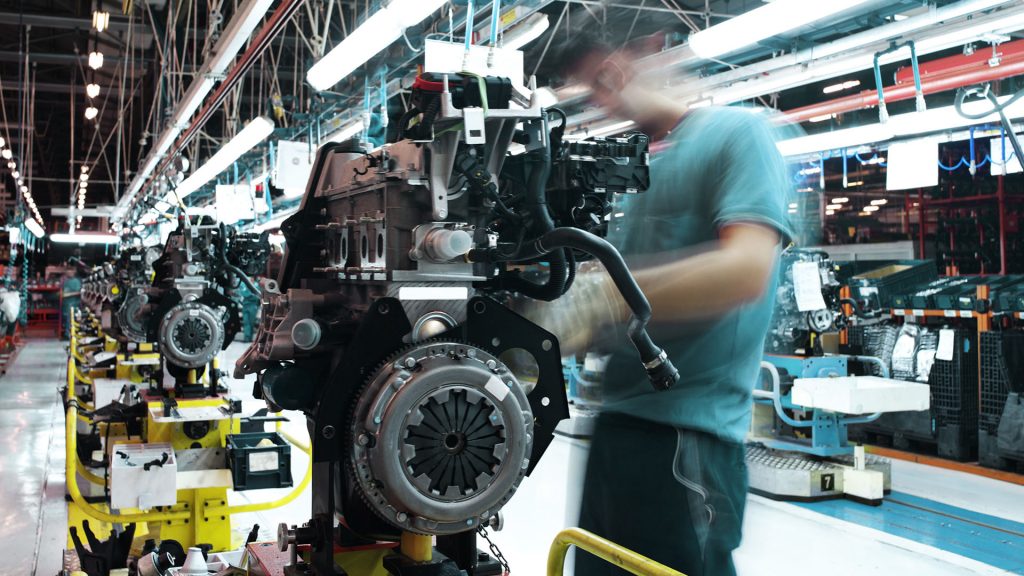Manufacturing has been the backbone of Michigan’s economy since Henry Ford built his first plant in Highland Park. That’s why you – and just about everyone else in the country – think about manufacturing here. It’s impossible to avoid including the auto industry.
The Detroit Chamber of Commerce has said that more than two million cars and trucks rolled off 11 assembly lines across the Detroit region in 2017. Including suppliers, there are over 1,600 automotive-related manufacturing establishments here in the state.
But every industry is only as strong as its weakest link. From union strikes and trade wars to tariffs and material shortages (like steel), the auto industry is susceptible to numerous threats, which we’ve seen time and time again.
The Center for Automotive Research (CAR) projects that consumers could be looking at price increases soon, as much as $1,300 for a typical vehicle and as much as $5,800 for a luxury vehicle. In line with the new CAR study, IHS forecasts U.S. new vehicle sales could plunge by 2 million vehicles annually, to 16.5 million a year from 2019 to 2025.
That could severely hurt Michigan commuters.
The vast majority of our automobiles can’t run without supplies of affordable fuel, right?
A case can certainly be made for electric vehicles (EV) picking up the slack left by less oil on the market, but for now, there are only about one million EVs on the road in the U.S. This significant milestone was achieved in October of 2018. That’s great news, but there’s still a lot of work to be done to increase that number and expand our nations charging infrastructure since it faces many of the same regulatory, policy, and market hurdles that any energy project faces, whether it be solar, wind, natural gas or other utility projects.
The expansion of EVs is impressive and came after the culmination of billions of dollars in automaker investment, tax credits paid directly to purchasers, state mandates, and cash assistance from the federal government and years of expanding the nationwide charging infrastructure.
In fact, there are now about one million EVs on the road in the U.S. This major milestone was achieved in October of 2018. That’s great news, but there’s still a lot of work to be done to increase that number and expand our nation’s charging infrastructure since it faces many of the same regulatory, policy, and market hurdles that any energy project faces, whether it be solar, wind, natural gas or other utility projects.
It is also important to note that, while one million total EVs on the road sounds like a lot, there are still roughly 272.5 million registered vehicles in the U.S.
So while its positive news to see emerging technology improve the range of EVs and their deployment the reality is we are going to need a lot of traditional transportation fuels like gasoline and diesel for years to come – cars aren’t going to disappear tomorrow.
That means if you care about Michigan’s auto industry and all the jobs that go along with it, you ought to care about Line 5. The Line 5 pipeline transports about 23 million gallons of oil and natural gas a day through the Upper Peninsula, including a four-mile stretch through the Straits of Mackinac. Currently, the State, its agencies, and the pipeline’s owner, Enbridge, are preparing for a $500 million upgrade to construct a tunnel that will house a new pipeline so that they can continue to safely transport oil under the Straits – the main ingredient in gasoline – to the destinations it needs to reach, like refineries.
Sound like a smart idea? You’re not the only one – more than half of all Michiganders support the idea too, according to a recent survey commissioned by the Michigan Chamber of Commerce.
Unfortunately, there’s been a lot of talk, and even more political posturing lately, about putting pressure on ending Line 5 or making it so difficult that it be entirely relocated. That may sound good in a speech or at a press conference, but the reality is it will negatively impact our state economy, our wallets and how our community accesses energy.
With looming price increases on one of Michigan’s most important industries, let’s not end Line 5, instead, let’s continue to use it, and send energy where it needs to go the most.
As the holidays are approaching, and families prepare to travel to their loved ones, we can’t afford to continue the back and forth on this project that will ultimately only hurt Michigan and its communities.
